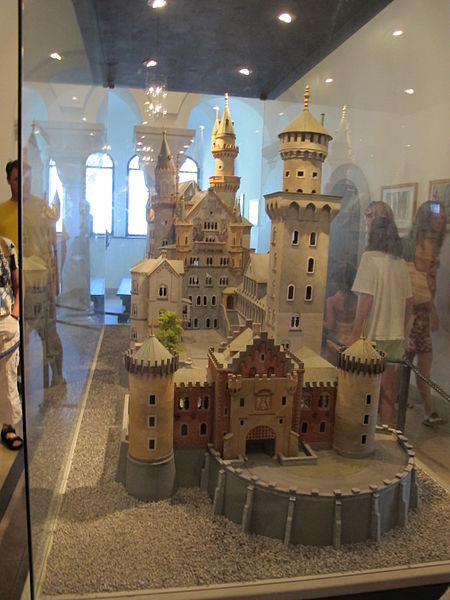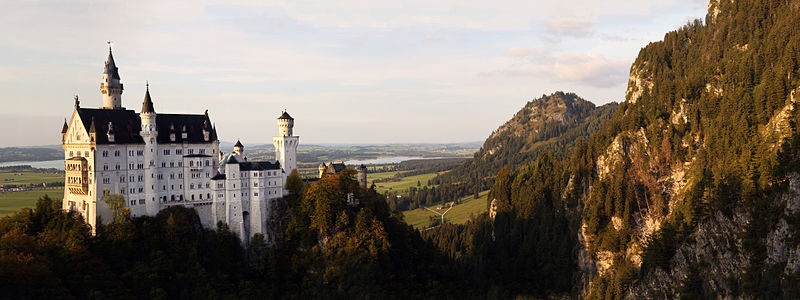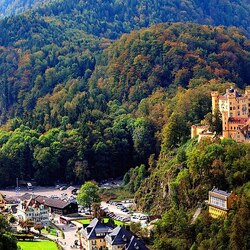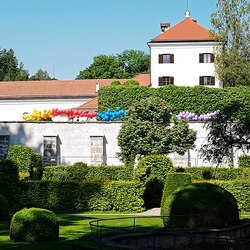Neuschwanstein
Neuschwanstein is a fabulously beautiful castle of Ludwig II (King of Bavaria) near the town of Fussen and Hohenschwangau Castle. The name of the castle translates as "new swan cliff". The castle soars above inaccessible mountains, charming the audience from the very first moments. Neuschwanstein was a figment of Ludwig II's imagination and was not built to protect the owners and lavish balls. The most famous place among travelers in Bavaria.
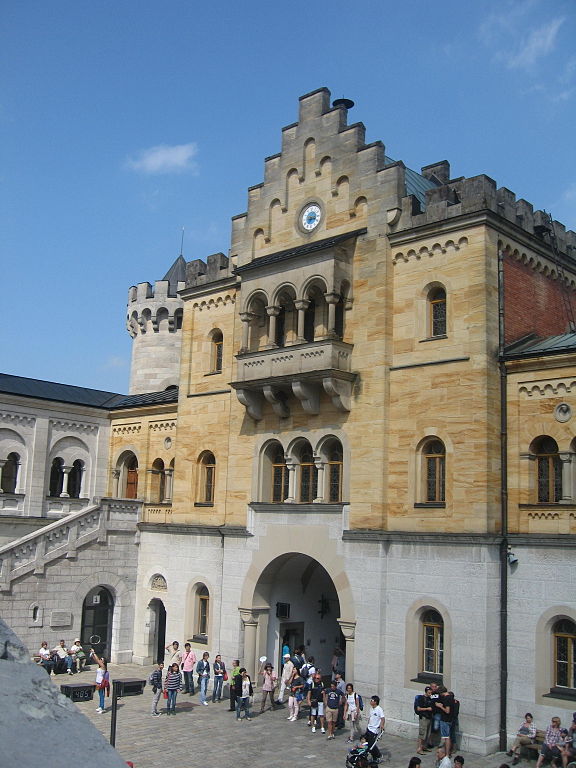
King Ludwig II gave the order to blow up the rock to form a site for the construction of the castle. In September 1869, the court architect Eduard Riedel laid the foundation stone for the construction of the castle. And the architect's artistic ideas were embodied by Christian Jank. In 1873, the gates were completed, and since that time, the construction of the palace has been actively underway. Construction materials were imported from all over Germany and lifted up the western side of the building using a steam crane. In 1883, the construction was almost completed, the current interior decoration remained, and in 1884 the king settled in the castle. More than two hundred workers were involved in the construction process. In 1886, the king died and all construction work stopped, the knights' quarters, the third floor, and the terrace on the west side were never completed.
Ludwig II really liked the halls in the Wartburg Castle, he was eager to implement something similar, and this idea resulted in the construction of the singers' hall. The numerous paintings in the hall depict scenes from the legends of the knight Parsifal. The paintings inspired Richard Wagner to write the mystical opera Parsifal. The hall did not see any artists during the life of the king, only on the fiftieth anniversary of Wagner's death a festive concert was held here, and this continued until the outbreak of World War II. Concerts resumed in 1969.

Another Neuschwanstein hall, to which the king paid much attention, is the Throne Room. In the audience, he wanted to show that God was kind to him. The bookmark in the form of a basilica with a niche under the throne, according to the king's plans, should indicate that the king and God have a great religious connection. Above the throne hang paintings by Wilhelm Hausschild, which depict kings canonized as saints. There are also images of Mary, Christ, John and the twelve apostles. The floor is decorated with mosaics depicting the sun with animals and plants on it. The throne room in Neuschwanstein was never completed, but nevertheless it impresses with its beauty.
The swan motif is visible in the architecture and artistic decorations of the castle, since Maximilian II of Bavaria, the father of Ludwig II, was the successor of the Counts of Schwangau, and the swan is their heraldic symbol. Historians think that it was Neuschwanstein who inspired Pyotr Tchaikovsky to write the ballet Swan Lake.
For the construction of Neuschwanstein Castle, a huge sum was spent at that time - 6 million gold marks. Immediately after the death of Ludwig II, the castle doors opened to visitors in order to somehow pay for the construction. There is a common joke among Germans: "To justify the construction of a castle, all inhabitants of the Earth need to visit the castle at least once."
